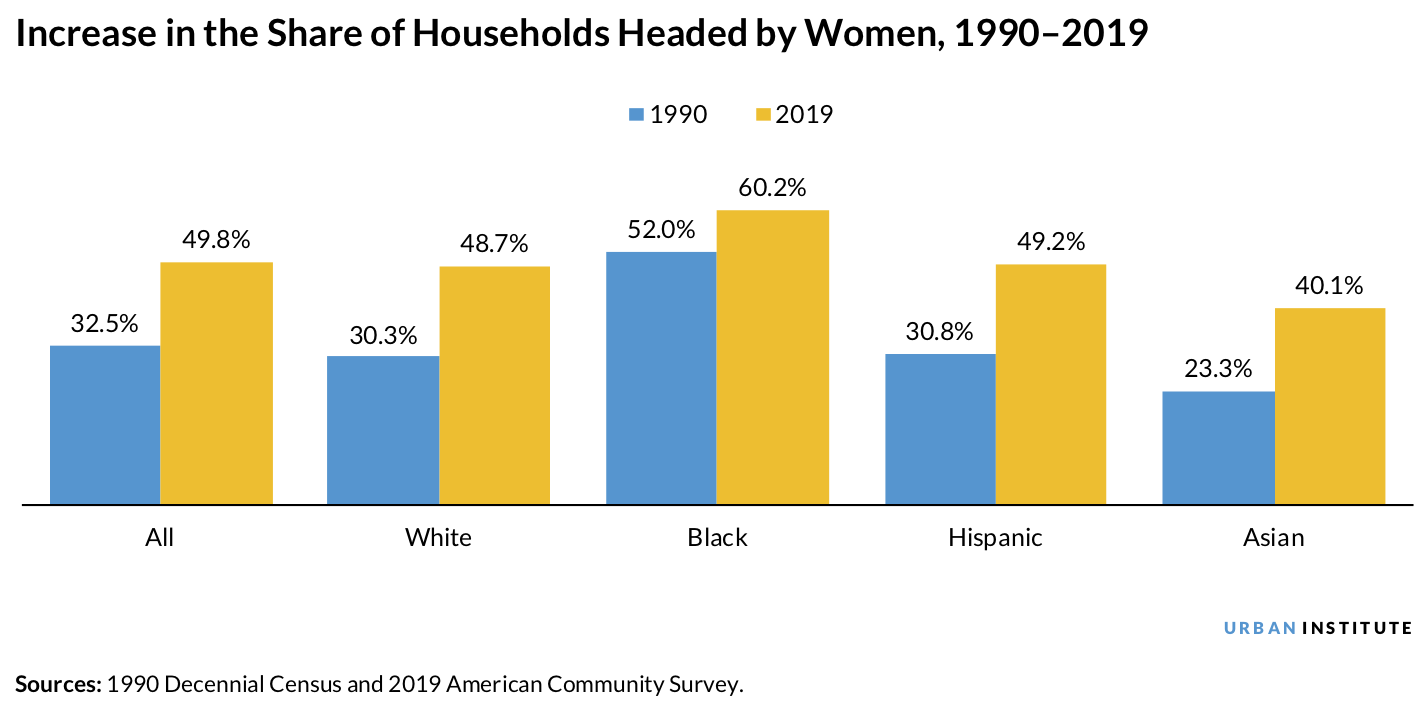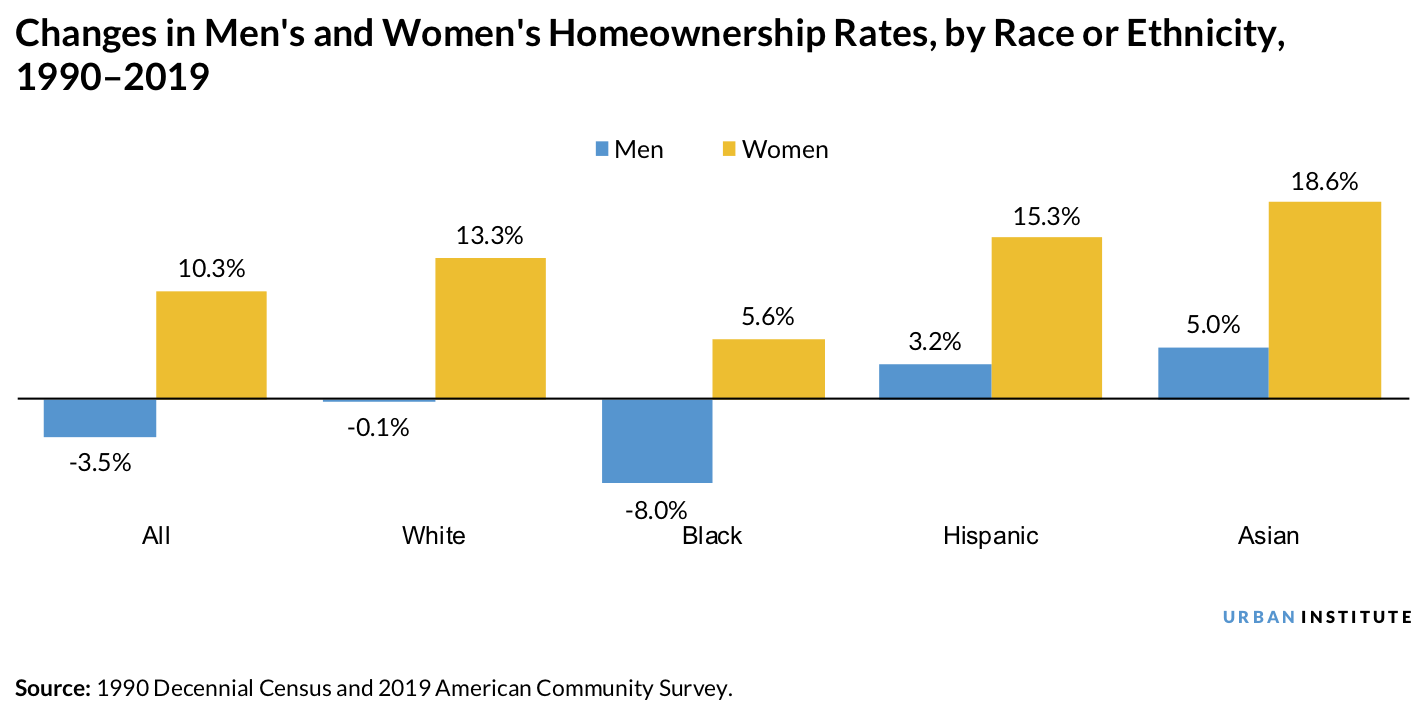After years of gains in educational attainment, employment, and wages, women have increased their rates of both homeownership and headship (the number who are heads of households). Now the Urban Institute (UI) says the pandemic may have put those advances at risk.
Jung Hyun Choi, Laurie Goodman, and Jun Zhu write in UI's Urban Wire blog that 30 years ago a male partner in married, heterosexual households was generally the main breadwinner and considered the household head. Then, between 1990 and 2019, as the marriage rate declined, the share of households headed by single women increased from 17.6 percent to 22.6 percent. It is also common to see women heading married two-earner households and those where this is true increased 24.3 percentage points over that same period to 46.1 percent in 2019. Women head up 52.5 percent of married Black households. Combining these changes, women now head half of all households, up from 32.5 percent in 1990 and 60 percent of Black households.

At the same time, while the homeownership rate among men dropped from 70.6 percent in 1990 to 67.1 percent in 2019, women's rate increased by more than 10 points to 61.2 percent. Asian women had the greatest increase, to 59.3 percent, and now lag Asian men by less than 2 points.

The gains in homeownership reflect women's relative gains in education. Over the past 30 years, the share of women who are heads of household and have a bachelor's degree increased from 17 percent to 35 percent, bring them nearly even with the parallel cohort of men. This holds for all racial and ethnic groups. In fact, more Black women have a bachelor's degree (25 percent) than Black men (24percent). This relative increase in women's educational attainment is consistent with their increase in headship and homeownership rates.
Despite the near equality in education, women still earn less than men. The median income of households headed by women is almost $20,000 lower than those headed by men and that gap narrowed by less than $1,000 between 1990 and 2019. Among those with a bachelor's degree, male heads of household earn in excess of $25,000 more than women household heads.
The gap is narrower when considering total household income. From 1990 to 2019, the median income of households headed by men increased from $84,460 to $101,788, while that of households headed by women increased from $47,447 to $81,000. This indicates that the second income is higher in households headed by women than in households headed by men, but still, the income gap between these households is large, reflecting wage disparities in the labor market.
Women's gains in homeownership over the past three decades have been notable, but the authors say the pandemic could change the landscape dramatically. Women are facing greater struggles because they are more likely to be working in industries like food and hospitality which have been hard hit by COVID-19. Further, many women have exited the labor force as managing caregiving and the remote schooling of their children became inconsistent with the demands of a job. The result has been a sharper decline in labor force participation for women than men which could further grow income disparities. If these job losses are permanent, this could slow or even reverse the positive trend in women's homeownership rates that we have observed during the past 30 years.
The authors say federal relief efforts like the recently enacted American Rescue Plan could minimize the number of pandemic job losses that become permanent, and action must be taken to ease the gender pay gap. They conclude, "Women have made significant accomplishments in the housing market over the past 30 years, achieving higher homeownership and headship, and without intervention, the pandemic could set back that progress."







